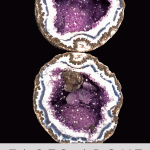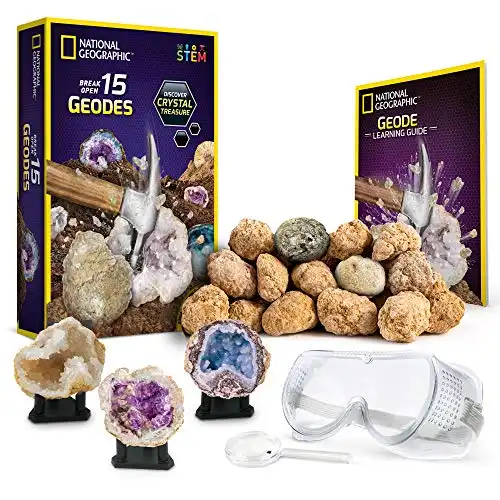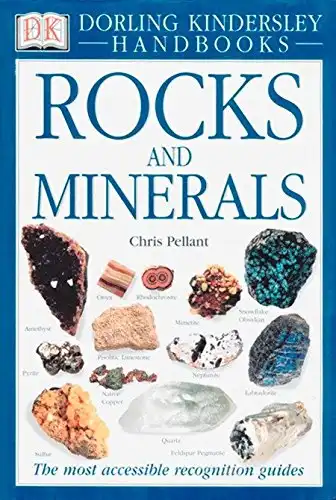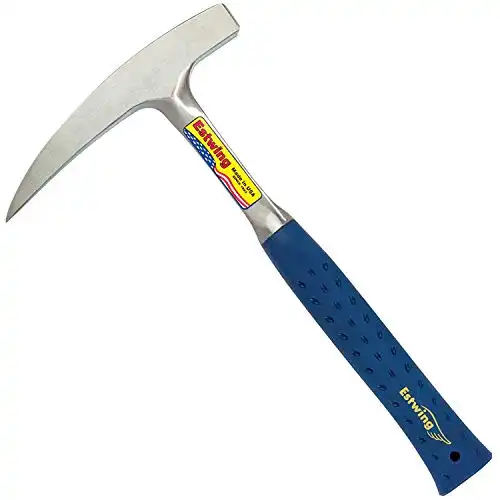It seems humans have been forever fascinated by geodes. Maybe it is our deep-seated pursuit of a hidden treasure, of which the geode caters to. Think of it, an unassuming rough rock that when opened up, reveals a hidden and hollow sphere of crystals within. The proverbial “diamond in the rough”.
And they key to knowing where to find geodes, is to first understand exactly what they are and how they’re made. Then you can start narrowing down your search on how to find them.
So, What Are Geodes Anyway?
So what exactly are these secret little globes of crystals that we call geodes anyway?
Simply speaking, geodes are hollow rocks that contain an insanely beautiful array of crystal formations inside. And depending on the minerals that make up the geode, different geodes will contain different kinds of crystals, such as amethyst, agate and quartz.
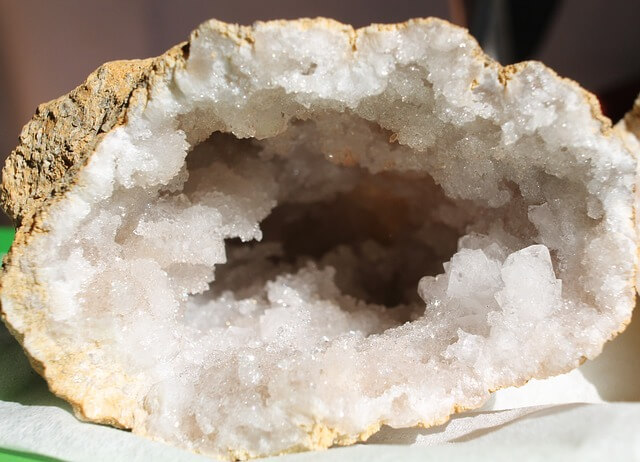
Geodes can be found in locations all over the world and can be anywhere from a few centimeters in size all the way up to tomb sized geodes that may weigh upwards of a ton!
Not only are there all different shapes and sizes of geodes, but there are many different colors and types of crystals that are capable of forming inside a geode.
Geodes are treasured and sought after all over the world for their beautiful and brilliant crystal contents. In addition to collectors who purchase finely finished display geodes, many enthusiasts get a whole lot more enjoyment out of finding and revealing the hidden contents on their own by cracking open the geode themselves.
Geodes can be found in many places in nature and can also be purchased whole, so you can experience the thrill finding out what’s inside by cracking it open yourself!
If you want to continue learning about geodes and how you can find them yourself…then keep on reading!
How Geodes Are Formed
So how do a bunch of beautiful crystals become trapped inside these rocky tombs?
Well, geodes begin as a void in the rock in which it will eventually form. These voids in the rock are typically a small pocket of air which could have been formed by a vast number of different methods, the most common being volcanic activity.
Geodes do not form in just any type of rock and are generally only found in a handful of rock types that may be prone to these small air pockets forming, such as basalts and limestones.
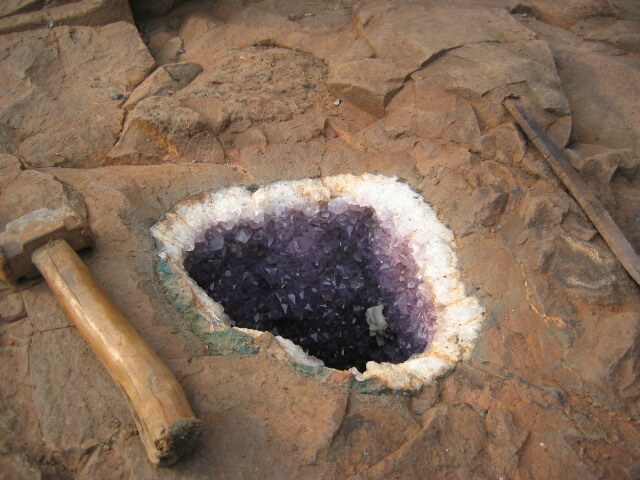
It takes more than just a sealed pocket in a rock to make a geode. What really makes a geode, and where the magic really shine is with the crystals. And in order for these crystals to form, it takes minerals…and time. Lots and lots of time.
In order for a geode to form, moisture eventually makes its way into the cavity, or void. And along with that moisture are the dissolved minerals. And that’s how it begins.
Over time, that moisture dries up and what’s left behind are the minerals that were dissolved in the water.
Over the millennia, this process of water entering, drying and depositing minerals happens over and over and over. Eventually, these minerals begin to build up, grow, and expand inside of the void, slowly working their way to the center of the void. Ultimately, the crystals will grow to fill the geode entirely.
Then, one day, a million year after the process began, you crack open the rock and are the first human to ever see inside.
Types Of Crystals Inside Geodes
The most common types of crystals forming in geodes tend to be variations of quartz crystals. However, there is wide variety colors and minerals that have been found growing and hidden inside geodes. Many geodes even contain astounding layers of agate between the crystals and rough outer crust.
Some of the more common types of crystals found inside a geode are:
Amethyst crystals

Quartz Crystal

Calcite crystals
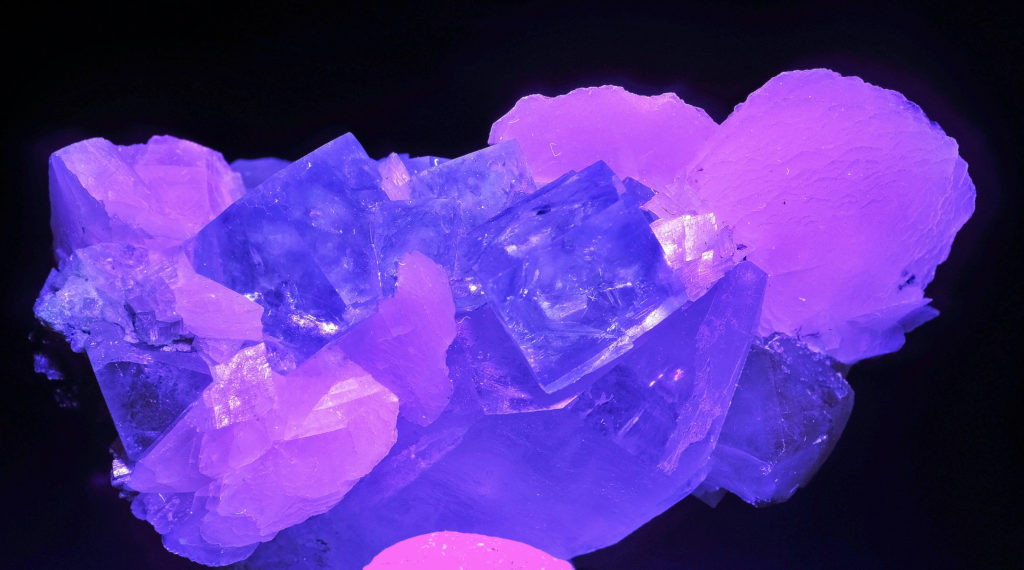
How Long Does It Take Geodes To Form?
Geodes are a product of chance and time. On top of the perfect conditions that must exist (a void that contains the right mineral deposits and environmental conditions), a geode must be given ample time to form. What is ample time you ask? Try upwards of millions of years.
In order for enough mineral deposits to accumulate into visually appealing crystals, it requires a slow seep of water that carries minerals into the void. Not a fast process by any means. This may be part of the thrill of geodes. Cracking one open to be the first thing to see these crystals that may have been hidden in the dark for maybe millions of years.
Different Types of Geodes
Geodes form in specific types of rocks all around the world. But like I mentioned earlier, geodes will typically only form in certain types of rock, like basalt and limestone.
Volcanic Geodes
One of the more common types of geodes, and the most sought after geodes, are volcanic geodes. Volcanic geodes are so common as a result of the numerous air pocket voids that can be found within volcanic rock, such as basalt.
These voids, or air pockets are formed when the gasses that are in the lava are unable to escape and become trapped in the cooling lava.
Over millions of years, groundwater seeps its way into the solidified void depositing the minerals that are contained within the water.
Other examples of volcanic geodes are geodes that form in lava tubes. Lava tubes are voids that are left behind from the liquid lava leaving the surrounding partially solidified lava.
Groundwater eventually made its way into these “tubes” leaving behind all the necessary minerals to make geodes.
One of the reasons volcanic geodes are so popular and highly sought after is because of these long tubes that many of the geodes were formed in. The result are massive geodes that are incredibly long. As a matter of fact, many of these lava tube geodes are over a meter in diameter and many meters long! Much like this massive gypsum geode recently discovered in Spain that measures over 6’ x 6’ x 26’ that can fit up to 10 people inside of it!
Sedimentary Geodes

The other common type of formation occurs from carbonate deposits such as those that are found in limestone rocks. The voids which are required for the initial growth of a geode generally begin as either a volcanic air pocket, or a void from rotted out organic material such as spaces left from tree roots.
The coloration of the inside geode crystals is highly specific to the local conditions and variety of minerals that are present in that location. Generally speaking, that’s why geodes found in one area will all have very similar crystal contents.
The Difference Between a Thunder Egg and a Geode?
While easy to confuse, a thunderegg is not synonymous with a geode. They usually contain cores of chalcedony, which may have been fractured followed by deposition of agate, jasper or opal, either uniquely or in combination. Unlike a geode with empty space inside, thundereggs are more often a solid matrix of deposited minerals filling a void.
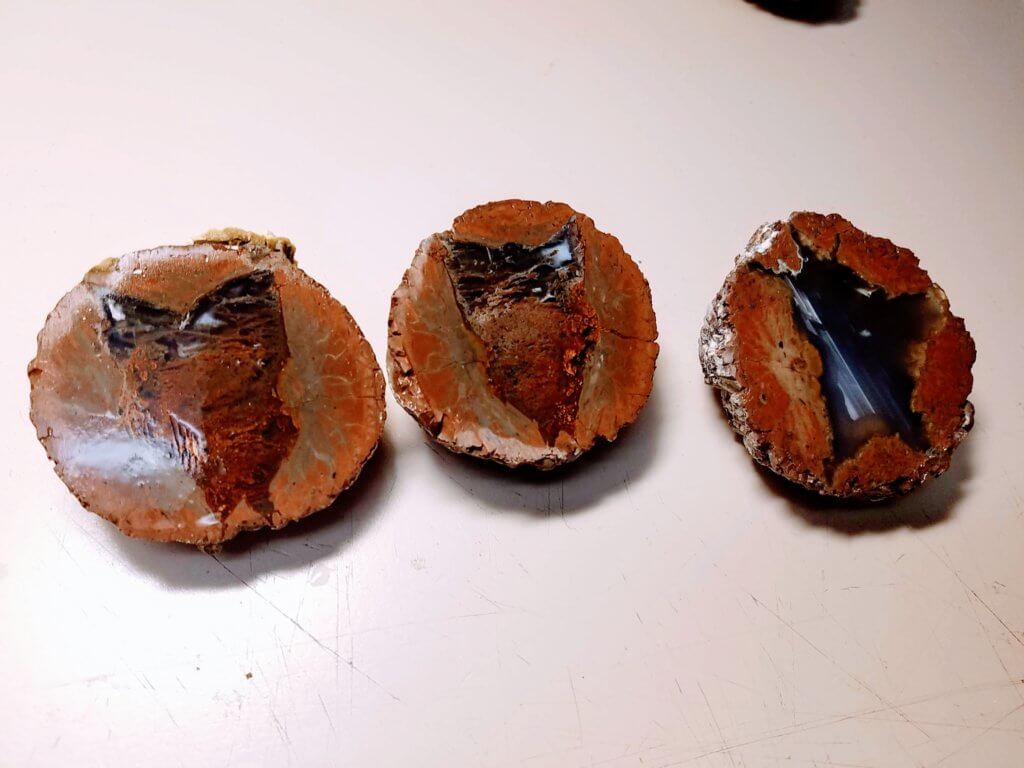
A geode is a simple term for a rock with a hollow in it, often with crystal formation/growth. A thunderegg on the other hand is a specific geological structure. In some situations, a thunderegg may be referred to as a geode if it contains a hollow within. Just know that not all geodes are thundereggs.
Thundereggs are formed in flows of rhyolite lava. Like some geodes, they begin within gas pockets in the lava, which act as molds. The cooled bubbles throughout time are gradually filled by water seeping through the porous rock carrying silica (quartz). The deposits lined and filled the cavity, first with a darker matrix material, then an inner core of agate or chalcedony. The various colors come from differences in the minerals found in the soil and rock that the water has moved through. While geodes can be found in many different locations in the United States, Oregon remains the top place for collectors to go out and find thundereggs.
How To Identify A Geode
The outer crust of a geode is very unassuming and can really resemble the plethora of other rocks that may be scattered along side it. This can make geodes hard to precisely identify as whole rocks for the beginner. Geodes can also be embedded inside another rock layer, such as limestone. The only true way to know if a rock is a geode is to crack or cut it open and find out if it contains a crystal core.
Generally speaking though, most geodes will take on a suspiciously spherical shape. If you’re in a known geode area, you can nail down your identification confidence by this trait even more. Often times, in limestone layers, you will see already revealed crystal-containing geodes on the surface of larger rocks. In my area, these are often very small geodes less than a few centimeters in diameter. Though they contain a beautiful display of crystals nonetheless.
Where and How to Find Geodes

Thankfully, for the rockhound or amateur geologist, geodes can be found in many locations all around the world. The conditions necessary to form geodes are common geologic features in many places across the U.S.; from old lava flows to sedimentary limestone layers left from our ancient oceans. Let’s take a look at how you can get out and find geodes of your own.
What states can you find geodes?
Geodes can be found in a staggering amount of locations across the United States. To cover all of the potential here would be impossible. However, there are a few spots across the United States that stand out among geode collecting locations.
The Midwest and Appalachia regions are known to contain several styles of highly coveted geodes. Kentucky, Iowa, and Tennessee are all known locations by geode collectors. In these areas, geodes formed in the abundant limestone in the region are the most common types. In fact, the state rock of Iowa is a geode!
The tributaries of the Green River in south-central Kentucky as well as along the ancient terraces of the Kentucky River are excellent locations for producing geodes. As a matter fo fact, the Green River has produced some very large geodes (two feet in diameter) and countless smaller ones.
In the desert southwest, many other forms of geodes exist. The states of Arizona, California, Nevada, and
A plethora of information exists online and in books on specific collection locations for those looking to get out in the field and find some geodes of their own. Each area will have its own specific ways to find, identify, and collect geodes. Amazon.com has excellent rockhounding guidebooks available for nearly every state and many countries. You can check them out here to see if there’s a book for your area.
In some areas, rockhounding tools such as a rock hammer will be necessary to extract the geode that you find. In other areas, loose geodes may be able to be collected on the ground by hand without any tools at all.
How to Break Open A Geode
Whether you found a whole, unopened geode, or purchased an intact geode from from a retailer; the real fun of geodes comes in the initial opening of the geode.
While museum grade geodes are cut with a high speed water-cooled diamond saw, most amateur rockhounds probably don’t have access to this type of equipment. Though this method of opening geodes can lead to beautifully presentable, precisely cut geodes or geode slices.
For the average rockhound, opening a geode may be a more forceful and less precise process. There are a few commonly used methods that people use to open geodes that we will cover here.
Method #1 For Breaking Open A Geode
The Blunt Force Method
First up, is the blunt force method. A very simple way to crack a geode is simply to place the geode inside of a sock or fabric bag to contain the about to be broken apart contents. With the geode in a bag, simply striking the geode with a rock-hammer, sledgehammer, or harder rock should facture the geode apart. With this method, your geode will generally end up in a few different pieces and not a halved-geode, like many people may picture a geode.
Method #2 For Breaking Open A Geode
Score With A Hammer And Chisel
If you want a little more precision to produce a more iconic image of a perfectly split geode, a hammer and chisel accompanied with a little patience and skill may do the trick. With a chisel, you can better direct the blow of the hammer. With the chisel, slowly tap your way around the circumference of the rock. The idea here is to only score the edge and not crack it open just yet. Once the rock is scored around the whole thing, more forceful blows on a second go around should eventually open the geode about the score line.
Fun Facts About Geodes
- The worlds largest geode is claimed to be in the state of Ohio. Crystal Cave was discovered in 1887 as workers for the winery were digging a well. The crystal-laden cave is located about 40 feet below the surface. The crystals have a blueish color and are made of strontium sulfate. The massive geode is 35 feet in diameter at its widest point. What’s incredible is that some of the crystals inside the world record geode measure as wide as 18 inches across and weigh up to a staggering 300 pounds. Believe it or not, but the geode, as it sits today, is somewhat smaller than it was when it was originally discovered. This is because some of the crystals inside of it have been harvested by collectors and even sold.
- Amethyst is a purple variety of quartz that is coveted for its brilliant deep color when found in geodes. BUT, did you know that the deep purple color will fade over time if left to sit in direct sunlight.
- Geodes may not always be dry inside. Since the seeping of mineral laced water forms geodes, opening a younger geode may reveal water inside it as well. As a matter of fact, here’s a video of a man drinking the water inside a geode!
- Commercially sold geodes can be dyed colors. Particularly those thin geode slices that are sold in a dazzling array of colors. Not all geodes on the market are natural representations of the minerals.
- Geodes are considered a Secondary Geologic Structure. This is due to the fact that they form after certain geologic features and conditions have already taken place. A primary geologic structure could be the volcanic rock in which the geode sits in.
Related Videos About Geodes
#1. How Geodes Are Formed
#2 Opening A Geode
#3 Massive Geode Of Pulpi in Spain
- Online rock and mineral club for collectors of all levels!
- Find community with like-minded rock and mineral enthusiasts.
- Monthly Giveaways!
- Free Access to Entire Digital Library of Products (current and future products)*

